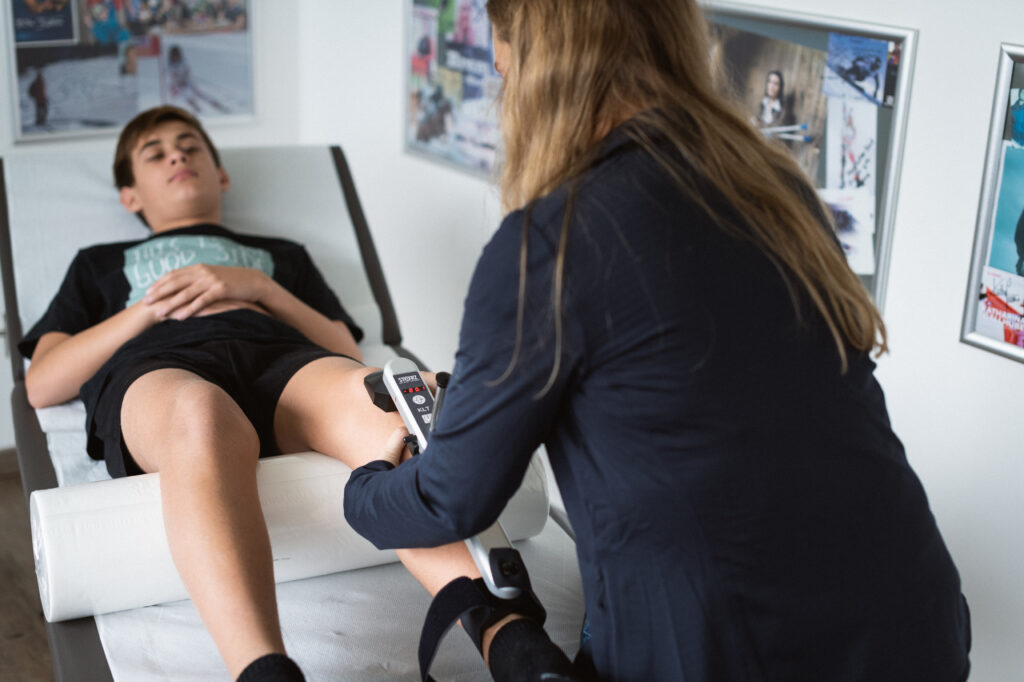My knee feels a bit pinched – Meniscus injuries during childhood and adolescence
Isolated injuries to the medial or lateral meniscus are rare during childhood and adolescence, but they do occur. Treatment options are more or less the same as for adults. The consequences of meniscus loss, however, even if only parts of the meniscus are lost, are far more dramatic. If an important shock absorber in the knee joint is lost, the development of arthrosis accelerates, and long-term outcomes may be rather unfavourable. Young people have the advantage of much better blood supply to the meniscus. As a result, the younger the patient, the greater the healing potential for meniscus injuries. It is therefore particularly important to take symptoms such as swelling and pain in the child’s knee joint seriously and to have them examined adequately. An MRI examination is a suitable method for evaluating a child’s meniscus. This is an examination without an x-ray beam.
If a meniscus injury is actually present, it can usually be treated arthroscopically. During surgery, the meniscus will likely be sutured if there is a possibility to preserve the meniscus. In order to enable proper healing of the injured fibrous cartilage tissue, a splint is used to prevent too much movement and crutches protect against overstraining, depending on the shape of the tear. Unfortunately, even a healed meniscus is not as resilient as an uninjured one. Keep in mind, however, that every year that this important shock absorber can be preserved is valuable, even if a part may have to be removed later on.
